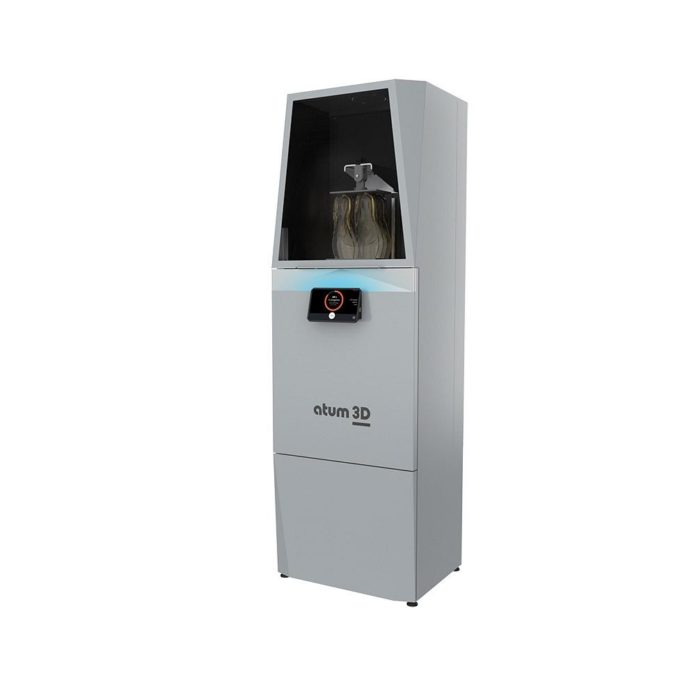Dutch manufacturer of 3D printers atum3D has added another 3D printer to its Light Processing (DLP) 3D printer series: the DLP Station 5-365 EXZ.
Based on the company’s open resin platform, the 365 nm flagship printer can process any functional third party material. It offers a build envelope which is almost double in height when compared to its closest sibling – DLP Station 5-365.
The 3D printer’s speed & accuracy makes it a good candidate for the production of personalised orthotics, custom orthopaedic insoles and test shoes in the orthopaedic workshop. The truth is, the creation of personalised orthopaedic test shoes traditionally is a time-consuming process of thermoforming, which includes trial and error. This DLP 3D printer is very timely as it decreases lead-time and manual labour enabling an orthopaedic shoemaker to spend more time with the client and significantly reduce waste.
“The development of the brand new DLP Station 5-365 EXZ was initiated following customer inquiries”, says Juan Vertelman, Commercial Director at atum3D. “Several partners and customers have been asking for the ability to print longer parts for some time. Partly due to the availability of new functional resins with fitting material properties, the focus applications for this state-of-the-art printer were clear. The Extended Z-axis allows printing larger, longer objects, such as insoles for even the largest shoe sizes and full limb orthotics. These types of applications implicate specific resin requirements like flexibility, toughness, and biocompatibility. Working closely with our chemical partners, we have successfully identified and co-developed materials that offer a perfect fit – both literally and figuratively.”
This launch comes with the introduction of a Curing Station vacuum post-curing solution. The solution delivers fully customisable presets that allow for the combination of powerful 360-degree UV light and radiated heat in a chamber without the curing-inhibiting oxygen. Furthermore, it offers thoroughly post-cured, stronger parts with crisp details in a fraction of the time.
This means that parts are ready for use much faster, allowing adoption of additive manufacturing in terms of on-site printing and post-processing for new applications and in different industries.
“The second introduction, Curing Station, significantly speeds up the manufacturing process. When creating functional parts and objects, post-curing after print is necessary and important to reach the final material properties”, Vertelman points out. “Its most distinctive features are the ability to post-cure in vacuum instead of atmospheric pressure and the level of control the user has to create the optimal post-curing process for a specific resin or application.”
The first feature, combined with powerful UV light and radiated heat, results in an optimal post-curing reaction and reaching the material end state up to ten times faster than other post-curing solutions. The latter allows individually setting the vacuum, pressure, UV light dose, degas time and the cooldown time for a series of subsequent steps, which can be saved in a curing preset.
This level of control makes it possible to create the optimal post-curing preset for a resin or application, resulting in high accuracy, less distortion, and crisp details.
atum3D combines both new products in its Application Packs, which are ready-made but customisable combinations of DLP Station, potentially Cleaning and/or Curing Stations, its intuitive Operator Station print preparation software and the functional resin that meets the application requirements in terms of process and material properties.
Remember, you can post free of charge job opportunities in the AM Industry on 3D ADEPT Media or look for a job via our job board. Make sure to follow us on our social networks and subscribe to our weekly newsletter : Facebook, Twitter, LinkedIn & Instagram ! If you want to be featured in the next issue of our digital magazine or if you hear a story that needs to be heard, make sure to send it to contact@3dadept.com






